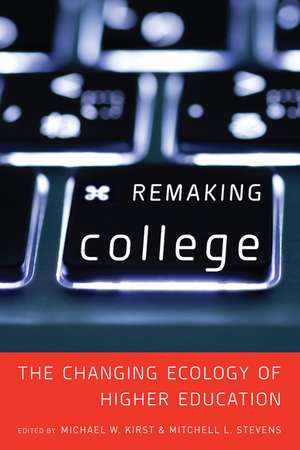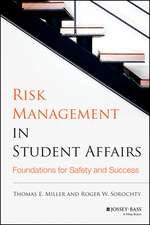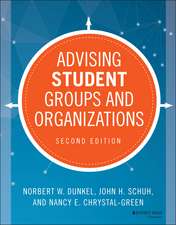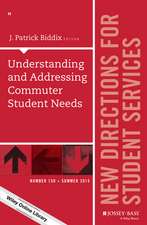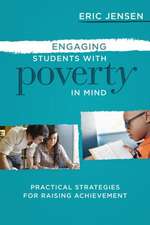Remaking College: The Changing Ecology of Higher Education
Editat de Mitchell Stevens, Michael Kirsten Limba Engleză Paperback – 6 ian 2015
Remaking College considers this changing context, arguing that a growing accountability revolution, the push for greater efficiency and productivity, and the explosion of online learning are changing the character of higher education.
Writing from a range of disciplines and professional backgrounds, the contributors each bring a unique perspective to the fate and future of U.S. higher education. By directing their focus to schools doing the lion's share of undergraduate instruction—community colleges, comprehensive public universities, and for-profit institutions—they imagine a future unencumbered by dominant notions of "traditional" students, linear models of achievement, and college as a four-year residential experience. The result is a collection rich with new tools for helping people make more informed decisions about college—for themselves, for their children, and for American society as a whole.
| Toate formatele și edițiile | Preț | Express |
|---|---|---|
| Paperback (1) | 175.59 lei 3-5 săpt. | |
| Stanford University Press – 6 ian 2015 | 175.59 lei 3-5 săpt. | |
| Hardback (1) | 647.52 lei 6-8 săpt. | |
| Stanford University Press – 6 ian 2015 | 647.52 lei 6-8 săpt. |
Preț: 175.59 lei
Nou
33.60€ • 35.17$ • 27.80£
Carte disponibilă
Livrare economică 15-29 martie
Specificații
ISBN-10: 0804793298
Pagini: 336
Dimensiuni: 152 x 229 x 23 mm
Greutate: 0.45 kg
Editura: Stanford University Press
Colecția Stanford University Press
Recenzii
"As the CEO of a 'broad access' institution, I am heartened that this volume and its authors recognize both the challenges and policy questions brought by the new exciting array of higher education options, as well as the critical importance of these colleges and universities to a diverse set of students."—Linda M. Thor, Chancellor, Foothill–De Anza Community College District
"Kirst and Stevens provide a critical focus on broad-access higher education, whose performance is absolutely crucial if the U.S. is to meet its educational goals in the coming decades."—Michael Bastedo, Associate Professor and Director, Center for the Study of Higher and Postsecondary Education, University of Michigan
Notă biografică
Cuprins
Higher education is a complex organization field in which many actors besides colleges and universities support and constrain each other. The field perspective provides historical, structural, and cultural context to recent developments in higher education such as the rise of digital learning, increasing costs, and concerns over learning and completion. The chapter focuses on three distinct field models of higher education as (1) an institutional field; (2) an arena of strategic action; (3) a demand-generated outcome.
The chapter specifies five ways in which digitally mediated instruction helps fulfill the traditional mission of broad-access schools and the needs of a wide variety of learners. Online learning (1) enables students to learn when and where it is most convenient for them; (2) lowers costs; (3) creates new pathways through college; (4) enables greater personalization and customization of learning; (5) facilitates new connections among students, instructors, and employers.
The chapter chronicles the expansion of the for-profit college sector in recent decades and the cycles of federal regulation and sector expansion that have characterized this growth. The authors suggest a cycle in which rising enrollments are followed by regulatory action spurred by concerns over perceived exploitation of students and government funds. Regulatory crackdown results in a reduced enrollment until entrepreneurial providers find new ways to grow, creating the cycle.
This chapter critiques current classification schemes in higher education, which tend to privilege four-year colleges and universities with liberal-arts curricula. The authors demonstrate a new strategy for delineating organizational categories in higher education using probabilistic topic models and readily available data on students and schools in the United States. This strategy better reveals the wide diversity of forms in this organizational field.
This chapter describes fundamental changes in early adulthood in recent decades and discusses their implications for higher education. Contemporary young adulthood is defined by the need to manage uncertainty, and the need for interdependence with (rather than independence from) others. Under such conditions, strengthening the transition to adulthood requires strengthening pathways into and through higher education, especially broad-access schools.
This chapter illustrates how the majority of students attending college in the US do not match conventional images of "ideal" or "traditional" college students. Most US college students are older, more often employed, and less likely to live on campus than popular conceptions imply. Clinging to inaccurate notions college students creates a marginalized majority and has important implications for how we think key policy issues such as college persistence. This chapter calls for a broader conception of diversity in college so that it recognizes the wide variation in life circumstances that characterizes the college-going population.
This chapter specifies the normative and technical aspects of assessment in higher education. Deciding what to measure is a political decision informed by prevailing cultural values and particular understandings of the purposes of higher education. The authors also consider the technical strengths and limitations of various accountability metrics available to policymakers today. The analysis has important implications broad-access colleges because the choice of certain outcomes and measurement strategies privileges some types of schools while disadvantaging others.
This chapter describes the characteristics of US education politics that have variably driven the development of policy for K-12 and higher education, paying particular attention to how the politics of each sector have been shaped by public opinion. The authors offer accounts from multiple theoretical perspectives on how policy is developed in each sector, and leverage the comparison to describe what changes in public opinion might need to occur if higher education is to undergo substantial reorganization.
This chapter uses extant research and descriptive data to identify important research agendas for understanding human capital in broad-access schools. The authors consider the recruitment, assignment, development and retention of instructors; the role of managers in these processes; and how the roles of managers differ between K-12 and higher education.
This chapter outlines how colleges can utilize data to identify and evaluate promising practices to improve college completion. The authors focus on using readily available institutional data as the basis for tractable research that might routinely inform better organizational decision-making. The chapter theme is illustrated through an example using data from the California State University system.
The chapter offers a matrix for organizing existing research and deriving questions for future scholarship.
